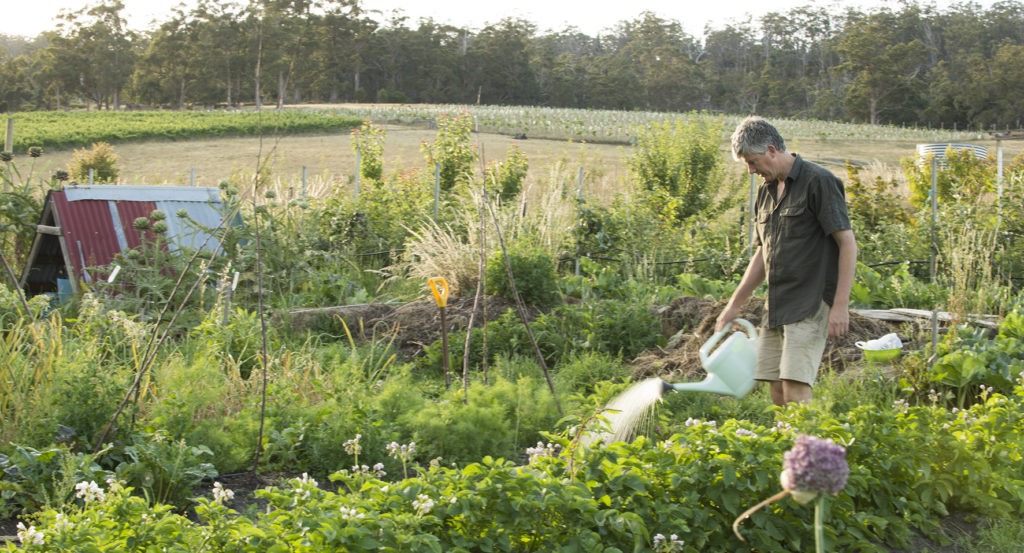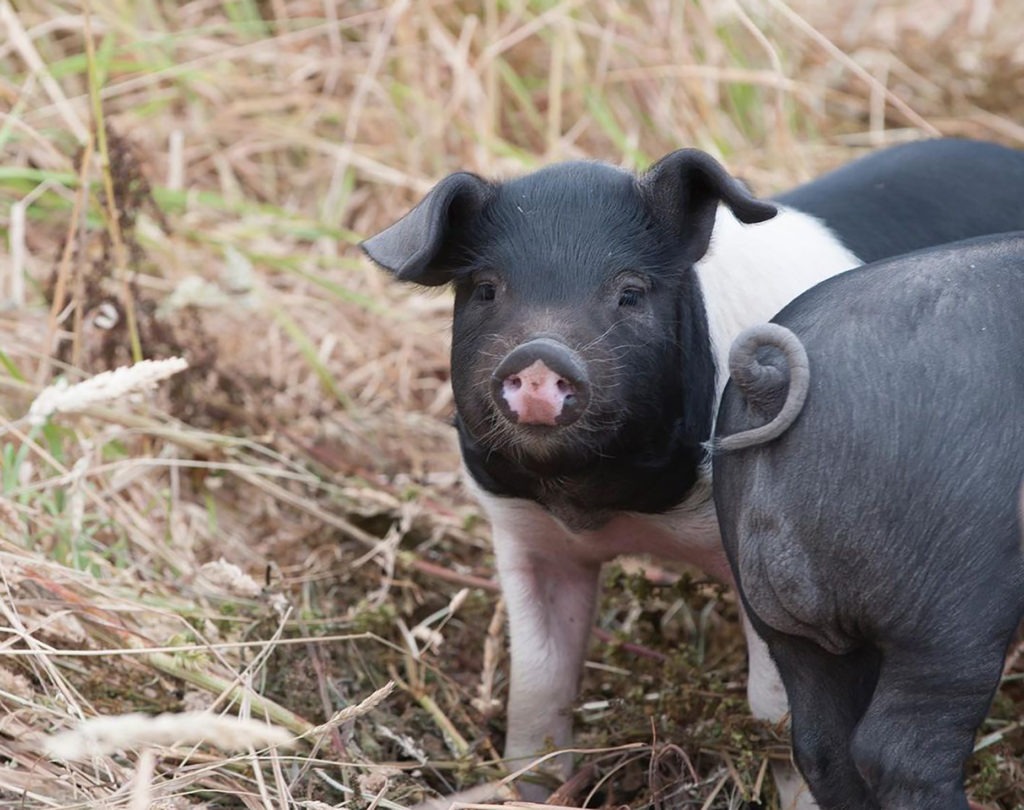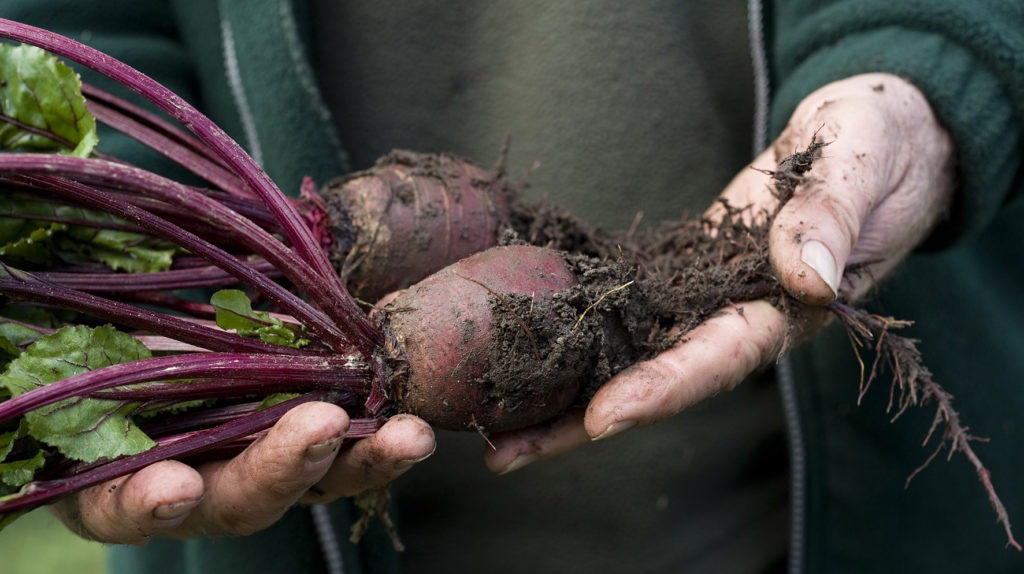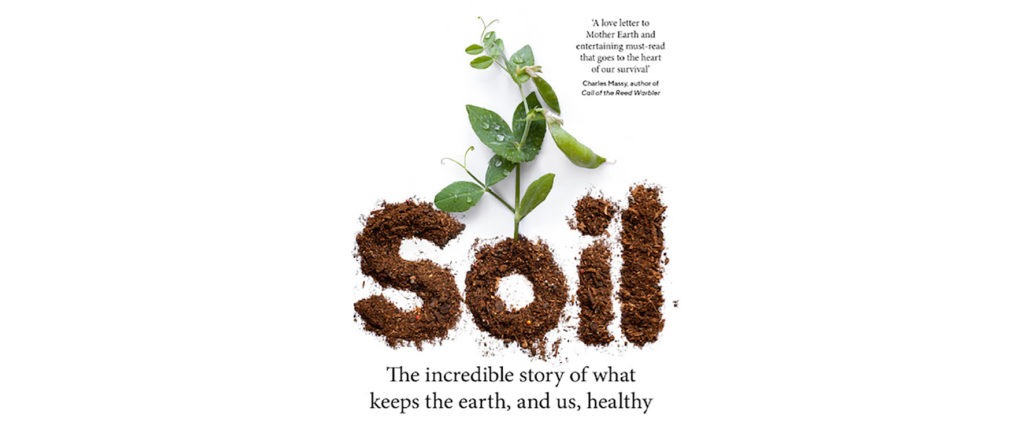Soil: why you should care about its fate
Have you ever tasted an indescribably delicious tomato or crunched on a sweet carrot and wondered: why does this taste so much better than the stuff I buy at the supermarket? While the person who grew that veg certainly deserves credit, the real hero in this picture is actually something that’s usually overlooked: the soil that food was grown in.
Every good grower – whether they be a farmer or someone with a flourishing backyard vegie patch – knows that all good food comes down to healthy soil. But years of intensive agriculture, over-grazing of livestock, lack of crop diversity and chemical use have depleted our soil. The UN estimates we only have around 60 years of topsoil left if we continue to farm this way. Currently, we’re losing around a soccer pitch worth every five seconds to erosion and land degradation. And where there’s no soil, there’s no food.
Matthew Evans, former chef and food critic turned Tasmanian smallholder, has explored the many challenges our soil faces – how it works, how it’s lost and how it can be repaired – in a fascinating new book entitled simply “Soil”. It’s an ode to the ground beneath our feet. A dedication to the powerful life force that keeps us and the earth healthy… And a must-read for anyone and everyone who cares about where their food comes from.

It all began with a nematode
Evans’ odyssey into the earth began when he and his wife Sadie bought Fat Pig Farm, a 70-acre property in Tasmania’s lush Huon Valley. They wanted to start a market garden, and decided to get their soil tested. They invited soil specialist Letitia Ware to take a look at it.
“She looked at it under a microscope, and showed me a few living things that were in it; a few bacteria and a nematode,” Evans recalls. “Then she took some of her soil and showed me, and it was teeming with life. I was gobsmacked. Seriously, I used to think that plants just ate dirt. I never thought it was a living intermediary. That plants can only access things through the action of other living things. It was a revelation.”

Underground connections
Evans has since delved ever deeper into this magical microscopic world. He’s now introduced changes to Fat Pig Farm that are designed to improve the quality of its soil.
“We move our pigs more often now,” he says. “Pigs are terrible for soil if they’re left in one area for long. They turn it over and compact it. So we move them around and rest areas for longer. This lets the living matter above the ground recover and helps the soil repair itself.
“Also, we don’t turn our garden beds. We only deal with the top one or two centimetres. We never dig the soil. It hates to be turned. You have to think of it as a living, breathing ecosystem. And a lot of the things living in the soil hate being exposed to UV light.”
Much of what you can’t see here are hyphae. These infinitesimally small beings are long tendrils of fungi that stretch out in search of nutrients for itself and other plants.
“They’re one 60th the width of a root hair of a plant; they’re really, really tiny,” Evans says. “But there are up to 10 kilometres of hyphae in a teaspoon of soil. Those threads are transporting nutrients, passing messages and doing all sorts of cool stuff. When they get cut, you’ve cut off that essential connection that exists within this ecosystem.”

It just gets better
The proof of the pudding is always in the eating, and over the years, as Evans has worked to improve the health of his soil, the soil has rewarded him with increasingly delicious produce.
“When I was a restaurant critic, I’d wonder, ‘Why does this piece of lettuce taste different to another piece of lettuce’. I used to think it was the grower that made all the difference. And it is, but the ingredient tastes different depending on how the grower treats their soil.
“Every year, our food gets better. The cabbages this year are blowing my mind. I don’t know why I get surprised every year. But the produce tastes better. Life in soil gives food flavour. The nuances, the complexity, a little bit of spice, the deliciousness. All of that is only possible because of soil. And if you increase soil health, you get way more going on.”

What can I do to help the soil?
If you’ll excuse the pun, Soil covers an awful lot of ground. It delves into regenerative agriculture, climate change, permaculture, history, philosophy, life, death and even a little theology. It’s an epic adventure into terra firma. It also introduces us to people who are making incredible headway into healing and heroing the soil. But for the average city-dweller who might not even have a pot plant to poke around in, what can you possibly do to help preserve and protect this precious resource? Luckily, Evans has plenty of advice.
“The first thing would be to never buy grain-fed anything, whether it’s chicken, pork, beef or lamb,” he says. “This is because grain-growing generally is bad for soil. It doesn’t mean grazing is good, although grass-fed animals can be great. But with grain-growing, typically you’re burning fossil fuels and depleting the soil.”

Every bit of soil matters
Evans also suggests you start buying your food from someone who can tell you about how it was grown, such as going to your local farmers’ market and talking to growers. Harris Farm Markets also supports regenerative agriculture, creating an “It’s All in the Soil” initiative to encourage consumers to take a closer look at where their food comes from.
“Sure, it’s hard for someone who lives in a flat to make change,” Evans says. “But every bit of soil matters. And the thing is, once we care, that’s when farmers change. Because farmers only do things on our behalf. If they knew that people were going to support them if they changed their practices or grew different grains, they would.
“We focus on so few crops. Our bread should have other things in it, not just wheat. We can grow things like triticale, spelt and oats – soil needs to have a variety of things growing in it, either at one time or over a period of time, to nourish it. And so, by merely by having a more diverse diet, you benefit your health and the health of the soil as well.”

Living proof
It might be hard to imagine getting excited about dirt, but if you read this book, you can’t help but get swept up in Evans’ fascination and enthusiasm. Soil is not just a book for farmers, market gardeners or environmentalists. It’s a book for everyone who eats.
“This is so important,” he says. “I wanted to get this message out because I think it matters. It’s about feeding the world, and making sure that the people we do feed are getting nutrient-dense food in a world that can sustain its production. It’s a beautiful thing to be thinking about; this understanding that if it weren’t for two inches of topsoil and the fact that occasionally it rains, we would have nothing to eat.”
Evans’ book is a celebration of all the incredible things about soil we now hold to be true – knowledge that soil scientists have recently discovered and what our ancestors already knew: the soil is alive. It’s a living being; a vital life force that sustains us all.
“I wrote Soil because I want everybody to appreciate this magical thing that nurtures us and nourishes us, and care about its fate,” Evans says. “Because I think catastrophe is on the way if we don’t begin to care about soil and its fate.”
Soil: the incredible story of what keeps the earth, and us, healthy is published by Murdoch Books. It’s available at all good books stores or online at murdochbooks.com.au










